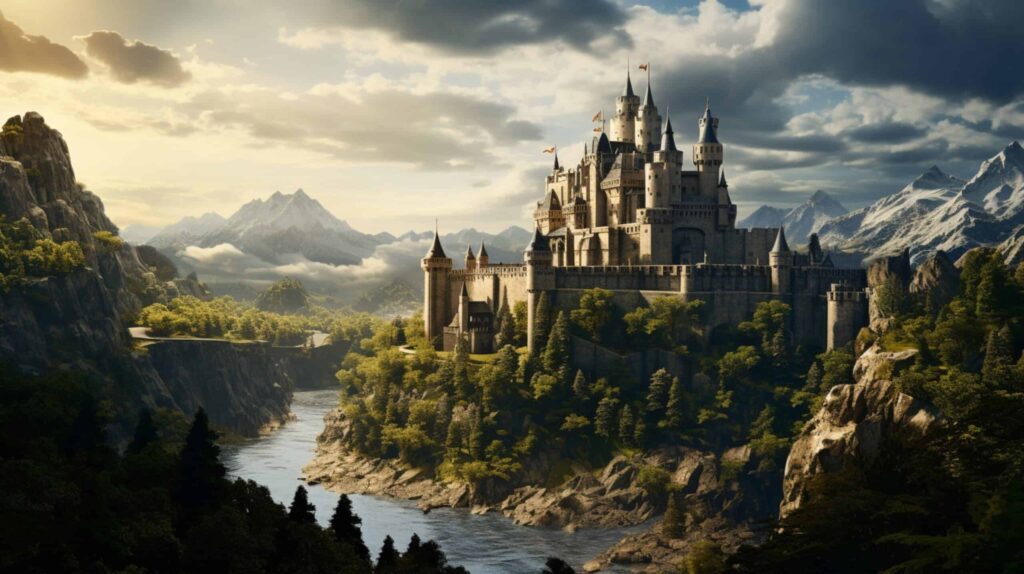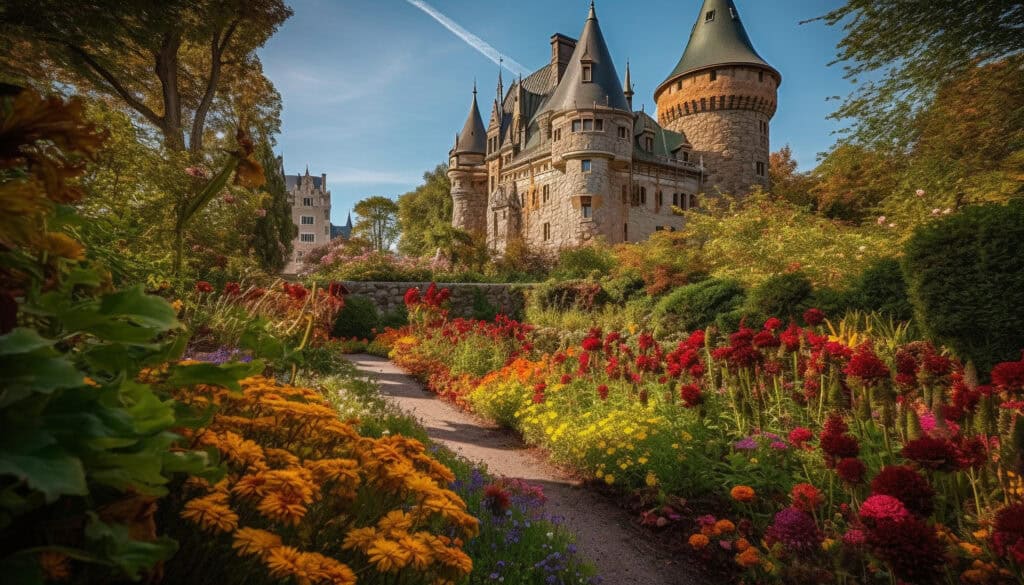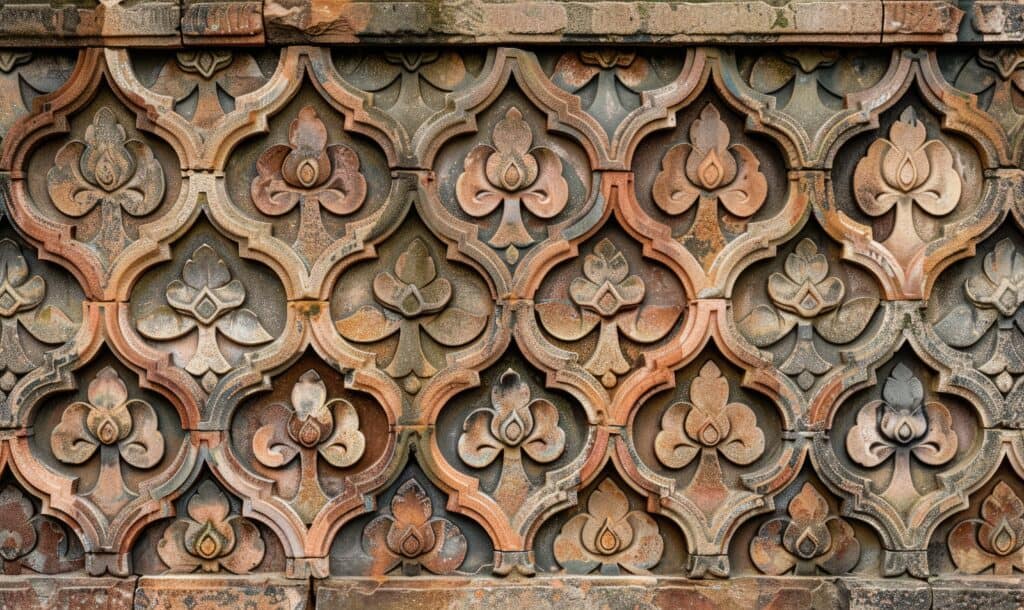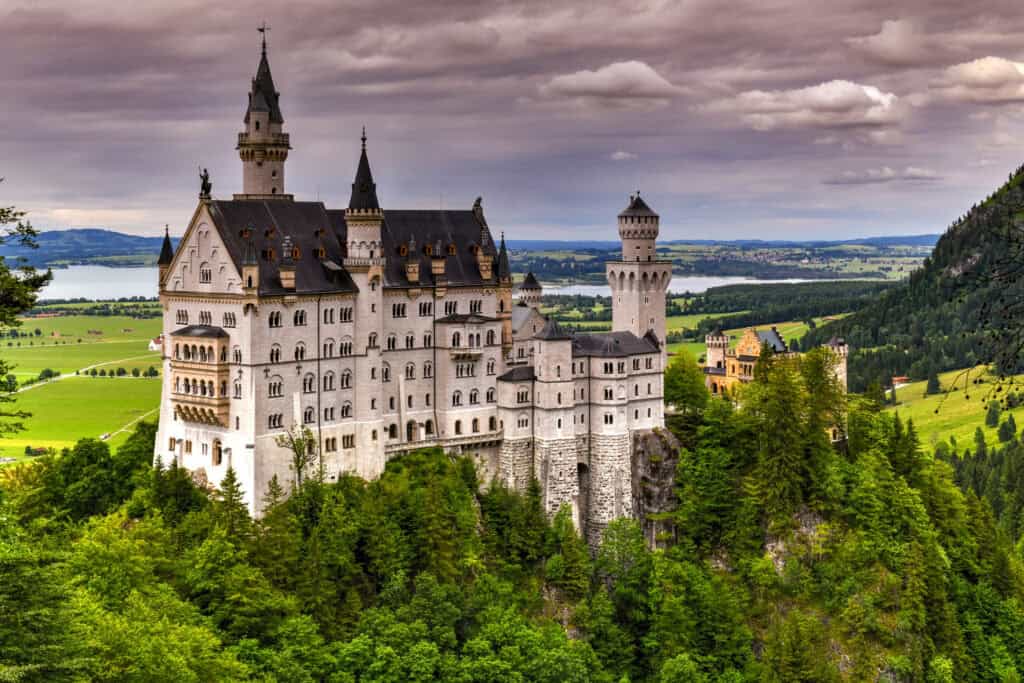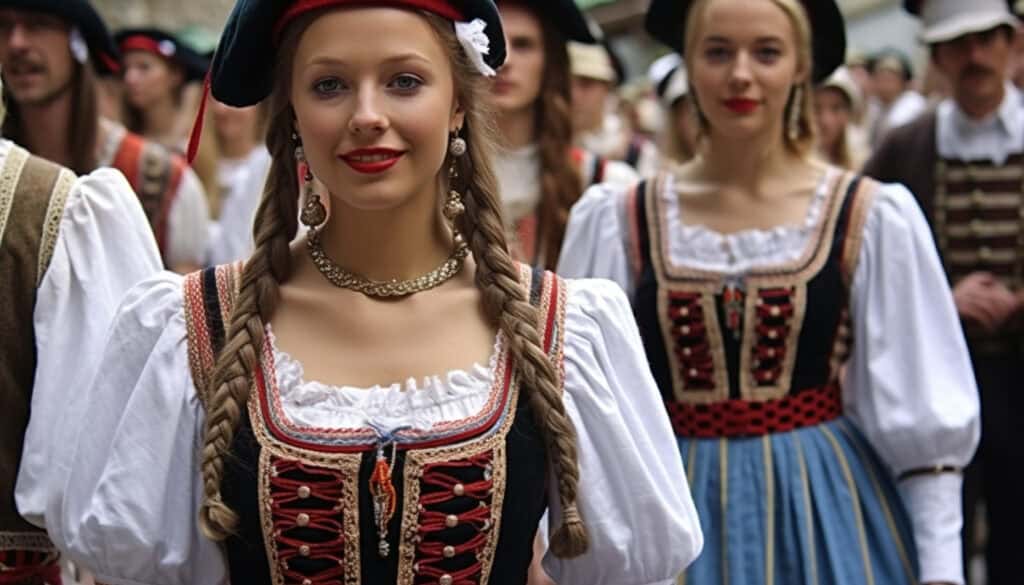Ever wondered how many castles dot the picturesque landscapes of Germany? From fairytale-like structures to imposing fortresses, Germany boasts an impressive number of castles scattered throughout its regions. Exploring these historic landmarks offers a glimpse into the country’s rich history, architectural marvels, and royal legacies. Whether you’re a history buff, architecture enthusiast, or simply captivated by tales of knights and royalty, Germany’s diverse array of castles promises an enchanting journey through time.
Key Takeaways
- Explore and Learn: Take the time to understand the rich history and architectural diversity of German castles.
- Visit and Discover: Germany boasts over 20,000 castles, offering a plethora of historical sites to explore and enjoy.
- Appreciate History: German castles hold significant historical importance, reflecting various periods and events in the country’s past.
- Marvel at Architecture: From Romanesque to Baroque styles, German castles showcase a blend of architectural influences throughout the centuries.
- Must-See Destinations: Discover iconic German castles like Neuschwanstein, Hohenzollern, and Heidelberg that attract visitors from around the world.
- Plan Your Trip: Consider including visits to German castles in your travel itinerary to immerse yourself in the country’s rich cultural heritage.
Understanding German Castles
Types of Castles
German castles come in various forms, ranging from fairytale-like structures nestled in picturesque landscapes to grand palaces exuding opulence. These castle-like architectural wonders showcase a blend of medieval fortifications and lavish residences.
Exploring German castles reveals a rich tapestry of history, offering insights into the country’s past. Each castle tells a unique story, reflecting the cultural heritage and historical events that have shaped Germany over centuries.
Historical Significance
The historical significance of German castles cannot be overstated. These structures, like castles, served as fortified defenses, protecting territories and exerting power over regions. Many castles witnessed key historical events, such as battles and royal ceremonies, adding layers of intrigue to their storied past.
- Pros:
- Rich historical significance
- Architectural marvels
- Cultural landmarks
- Cons:
- Maintenance costs
- Accessibility challenges for some castles
- Preservation efforts required
Cultural Importance
German castles play a pivotal role in preserving the country’s cultural identity. They serve as symbols of national pride and heritage, attracting tourists from around the globe to marvel at their beauty and immerse themselves in Germany’s rich history.
Visiting German castles offers a glimpse into the country’s architectural evolution. From imposing medieval fortresses to elegant Baroque palaces, these castle structures showcase the diverse styles that have influenced German architecture over the centuries.
Shaping Architectural Landscape
German castles have left an indelible mark on the country’s architectural landscape. Their influence can be seen in the design of modern buildings, with architects drawing inspiration from the intricate details and strategic layouts found in these historic edifices.
Number of Castles in Germany
Mecklenburg-West Pomerania
Germany boasts an impressive number of over 2,000 castles, manor houses, and stately homes. Particularly in Mecklenburg-West Pomerania, this region alone is home to a vast array of historical treasures.
Situated in this region is the magnificent Schwerin Castle, surrounded by picturesque gardens and located on an island in Lake Schwerin. This castle stands as a testament to the rich history and architectural grandeur prevalent in the area.
Marienburg Castle
One notable gem among the many German castles is Marienburg Castle near Hanover. Often referred to as the Neuschwanstein of the north, this stunning fortress showcases intricate Gothic architecture and rich cultural heritage.
Marienburg Castle was constructed between 1858 and 1867 by King George V of Hanover for his wife, Queen Marie. The castle’s design is heavily inspired by medieval structures, exuding a fairytale-like charm that captivates visitors from far and wide.
Fairytale Castles in Northern Germany
The landscape of northern Germany is adorned with a unique charm due to its scarcity of fairytale castles. Experts acknowledge that while southern Germany is renowned for its fairytale-like structures such as Neuschwanstein Castle, the north offers a different yet equally enchanting experience.
Despite their rarity, northern German castles like Glücksburg Castle and Rheinsberg Palace are architectural marvels worth exploring. These structures not only reflect historical significance but also offer visitors a glimpse into the region’s cultural heritage, such as a castle.
Historical Significance
Rich History
German castles hold centuries of stories, embodying the status symbol of power and wealth. Knights once roamed these castle structures, guarding treasures and engaging in epic battles.
Each castle offers a unique view into the past, showcasing architectural marvels that have stood the test of time. These fortresses, like castles, were not just defensive structures but also served as symbols of authority and grandeur.
Cultural Influence
German castles were more than just buildings; they were central to the social fabric of their times. They hosted feasts, celebrations, and gatherings that shaped the cultural landscape of the region.
The allure of German castles transcends borders, attracting visitors from around the world to witness their splendor. Today, these castles stand as top tourist destinations, captivating anyone who steps foot inside.
Architectural Styles
Medieval Design
German castles exhibit a rich array of architectural styles, with many dating back to the medieval era. These castles, characterized by thick walls and towers, served as defensive structures during times of conflict. The design focused on fortification and strategic positioning to withstand sieges.
Baroque Influence
During the Baroque period, German castles underwent a transformation in their architectural style. Elaborate gardens and intricate interior decorations became prominent features, reflecting the opulence and sophistication of the time. The integration of artistic elements added a touch of elegance to these structures.
Reflecting Historical Periods
Each German castle’s architectural style is a testament to its historical context and purpose. For example, the medieval design of Burg Eltz, a castle, showcases the defensive needs of that era, with its sturdy walls and towers. In contrast, the baroque influence on Schloss Charlottenburg, a castle, highlights the artistic flair and luxury favored during that period.
Design Elements
The intricate details found in German castle architecture are a marvel to behold. From ornate facades to grand courtyards, every element is meticulously crafted to create a sense of grandeur and majesty. The use of stone masonry and wood carvings further adds to the charm and uniqueness of each castle.
Historical Significance
The architectural styles of German castles not only reflect the artistic preferences of their respective periods but also hold significant historical value. These structures, like castles, serve as tangible reminders of Germany’s past, offering insights into its cultural heritage and societal norms through the ages.
Famous German Castles
Notable Structures
Germany boasts a plethora of fascinating castles that have stood the test of time, each holding unique historical significance. From the fairytale-like Neuschwanstein Castle to the medieval Burg Eltz, these structures are a testament to Germany’s rich cultural heritage.
Architectural Marvels
German castles are renowned for their diverse architectural styles, showcasing a blend of Romanesque, Gothic, and Baroque influences. The intricate details in the design of these castles reflect the craftsmanship and artistry of their builders throughout history.
Historical Significance
Many German castles played pivotal roles in shaping the country’s past, serving as strategic fortresses, royal residences, or centers of power. For example, Heidelberg Castle witnessed centuries of wars and celebrations, offering a glimpse into Germany’s turbulent yet vibrant history.
Iconic Symbols
These castles in Germany have become iconic symbols not only for their architectural beauty but also for the stories and legends associated with them. Visitors flock to landmarks like Hohenzollern Castle to immerse themselves in the tales of knights, kings, and battles that once graced its halls.
Popular Tourist Destinations
The allure of German castles extends beyond history buffs, attracting tourists from around the world seeking to explore these magnificent structures. Visitors can wander through the grand halls of Sanssouci Palace or stroll along the ramparts of Wartburg Castle, soaking in the grandeur and charm of these historic sites.
Castles as Tourist Attractions
Unique Experiences
German castles offer unique experiences for tourists, allowing them to immerse themselves in history through guided tours and interactive exhibits. Visitors can explore the castles, fortresses, and palaces, gaining insights into the lives of medieval lords and noble guests.
At these castles, tourists can participate in activities such as archery, medieval banquets, and even stay overnight in castle hotels. The ambiance of these historical sites provides a glimpse into a bygone era, making the experience truly unforgettable.
Cultural Events
German castles host various cultural events and festivals throughout the year, attracting tourists with a love for history and tradition. These events showcase music concerts, theatrical performances, and reenactments of medieval ceremonies.
Tourists can witness traditional dances, costume parties, and jousting tournaments that bring the rich history of these castles to life. Such events not only entertain visitors but also educate them about the cultural significance of these architectural marvels.
Festivals
Throughout Germany, numerous castles hold festivals that celebrate local traditions and customs. These festivals feature artisan markets selling handmade crafts, local delicacies, and traditional attire.
Visitors can indulge in authentic German cuisine while enjoying live music performances in the picturesque settings of these ancient castles. The festive atmosphere creates a vibrant blend of past and present, offering tourists a memorable experience filled with cultural richness.
Preservation Efforts
Conservation Projects
Preserving German castles is crucial to maintain their historical significance and authenticity. Various conservation projects focus on restoring these architectural marvels to their former glory. Organizations like the German Castle Association play a vital role in overseeing preservation efforts.
Challenges Faced
Despite ongoing preservation efforts, German castles face numerous challenges. Factors such as age, weathering, and lack of funding pose significant obstacles to maintaining these structures. The aftermath of wars has also left many castles in a state of disrepair.
Strategies for Preservation
To combat these challenges, innovative strategies are employed. Advanced technologies like 3D scanning and digital mapping help in documenting the castle’s current condition. Collaborations with architects, historians, and archaeologists ensure that restoration work is carried out meticulously.
Castles and German Culture
Influence on Art
German castles from medieval times have left a lasting impact on the country’s art scene. The majestic architecture of these castles often served as inspiration for artists, influencing various artistic movements throughout history.
The intricate designs and grandeur of German castles have been depicted in numerous paintings and sculptures, showcasing the cultural significance attached to these historical landmarks. Artists often drew inspiration from the imposing structures of castles, incorporating elements of their design into their works.
Literary Influence
The presence of German castles has also played a significant role in shaping the country’s literary landscape. Many renowned authors and poets have drawn inspiration from these ancient fortresses, weaving tales of battles and romance set within their castle walls.
German literature is replete with references to castles, portraying them as symbols of power, mystery, and intrigue. These architectural marvels, like castles, have become central motifs in various literary works, adding depth and richness to the storytelling tradition in Germany.
Folklore Representation
German castles hold a special place in the country’s folklore, serving as iconic symbols deeply rooted in rulership and tradition. Legends and myths surrounding these castles have been passed down through generations, enriching the cultural tapestry of Germany.
These stories often depict heroic feats, epic battles, and mythical creatures associated with the castles, captivating audiences with tales of bravery and adventure. The folklore surrounding German castles reflects the deep connection between the country’s past rulers and its rich cultural heritage.
Final Remarks
You’ve now explored the world of German castles, discovering their rich history, architectural beauty, and cultural significance. With over 20,000 castles, Germany boasts a diverse range of structures that not only serve as tourist attractions but also stand as testaments to the country’s past. From medieval fortresses to lavish palaces, each castle tells a unique story that is worth exploring.
As you plan your next adventure, consider adding a visit to one of Germany’s many castles to your itinerary. Immerse yourself in history, marvel at stunning architecture, and experience firsthand the grandeur of these magnificent structures. Whether you’re a history enthusiast, an architecture buff, or simply looking for a unique travel experience, German castles offer something for everyone. So go ahead, pack your bags, and embark on a journey through time and culture in the enchanting world of German castles.
Frequently Asked Questions
How many castles are in Germany?
Germany is home to over 20,000 castles, making it a country with one of the highest numbers of castles in the world. These castles vary in size, style, and historical significance, offering a rich cultural experience for visitors.
What is the historical significance of German castles?
German castles hold immense historical importance as they symbolize the country’s medieval heritage, feudal past, and architectural prowess. Many of these castles played critical roles in shaping German history through battles, alliances, and cultural exchanges.
Why are German castles popular tourist attractions?
German castles attract tourists due to their picturesque settings, fascinating histories, and well-preserved architecture. Visitors can explore royal chambers, beautiful gardens, and panoramic views while immersing themselves in the rich stories of these ancient fortresses.
How do preservation efforts contribute to maintaining German castles?
Preservation efforts play a vital role in safeguarding German castles for future generations. Through restoration projects, maintenance work, and cultural initiatives, these efforts ensure that the architectural splendor and historical significance of the castles remain intact.
In what ways do German castles, dating back to medieval times, reflect the country’s culture?
German castles serve as cultural landmarks that reflect the nation’s traditions, values, and artistic achievements. From Gothic masterpieces to Renaissance marvels, each castle tells a unique story about German society, royalty, and architectural evolution.

